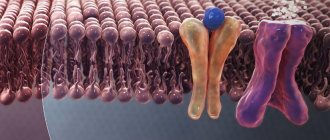The presence of fat in the urine is characterized by a white sediment in the urine.
Most often, cloudiness is caused by the presence of pus and microbes in the urine.
In this case, the urine sediment is characterized by a greenish color and the presence of purulent threads in the urine.
The cause of pus and microbes in the urine may be:
- Inflammation of the genitourinary canal due to any sexually transmitted infection (STD)
- Inflammation of the bladder (cystitis) occurs most often in women
- Inflammation of the prostate gland in men (prostatitis)
- Kidney inflammation (pyelonephritis)
When mixed with blood sediment, the color of cloudy urine can be red, pale pink, or dark burgundy.
The most common causes of blood in the urine may be:
- Injuries to the urinary tract due to passing stones and sand
- Vascular ruptures in the urinary tract
- Urinary tract injuries
What to do and how to treat?
If cloudy urine is the result of an infectious bacterial disease, first of all a course of antibacterial therapy is prescribed, with the help of which it will be possible to destroy the pathogen and stop the inflammation. Antibiotics such as Monural or Nitrofurantoin are used. For urolithiasis, conservative treatment is prescribed, in which the medications “Canephron”, “Enatin” or “Olimethin” are prescribed. If such therapy does not produce results, the stones are crushed using a laser. When cloudy urine is caused by non-pathological factors, the doctor will advise you to improve your diet, normalize your drinking regime, get rid of bad habits, and lead a healthy lifestyle.
prourinu.ru
Cloudy urine due to sexually transmitted diseases
Diseases are often transmitted through sex.
This is a specific group of infections.
These include more than a dozen pathogens of various natures:
- viral;
- mycotic;
- parasitic;
- bacteriological
According to statistics, STIs can be detected in every tenth person.
This indicates a high prevalence.
The number of cases includes people from adolescence to retirement age.
Infections provoke the occurrence of inflammatory processes in the pelvic organs.
They can lead to serious problems such as infertility.
STIs have the following pathogens:
- mycoplasma;
- ureaplasma;
- Trichomonas;
- candida;
- gardnerella;
- chlamydia;
- herpes virus;
- human papillomavirus;
- molluscum contagiosum.
Characterized by high sensitivity to external environmental conditions.
Successful infection requires contact between a clinically healthy person and an infected person.
It's not just about intimacy.
For infection, everyday contact is enough, for example, with viral infections.
Violation of the integrity of the skin and mucous membranes serves as a gateway for the penetration of microflora.
In this case, the risk of infection increases during oral and anal sex.
This also happens when using general products for personal intimate hygiene.
Most infectious agents can penetrate the placental barrier.
In utero they infect the fetus.
This can cause significant harm to its physiological growth and development.
The sad consequences of intrauterine infection sometimes appear even years after the birth of the child.
This can be manifested by disturbances in the functioning of the heart muscle, liver and kidneys.
Important!
It is necessary to undergo regular preventative testing to detect infection.
STI transmission factors:
- unprotected sexual intercourse;
- close contacts in everyday life;
- neglect of the rules for sterilization of medical instruments;
- transfusion of blood and its components;
- organ and tissue transplantation.
Each infection has certain symptoms.
But the general picture of clinical manifestations is very similar for all infections.
These symptoms include:
- cloudy urine;
- various types of discharge from the urethra;
- itching and burning sensation;
- pain during urination or sexual intercourse;
- discomfort and nagging pain in the lower abdomen.
Many sexually transmitted diseases are characterized by an asymptomatic course.
When the first signs are detected, you should urgently consult a specialist.
This will prevent the disease from progressing.
Remember!
If you find any suspicious signs, be sure to notify your sexual partner!
For diagnosis, the specialist collects a complete medical history from the patient.
Women undergo a full gynecological examination, and men visit a urologist.
Experts evaluate the severity of manifestations characteristic of the presence of an STI.
Laboratory diagnostic methods:
- a smear from the cervix or urethra;
- bacteriological culture and determination of sensitivity to antimicrobial drugs;
- identification of fragments of DNA chains of pathogens using the polymerase chain reaction method.
Acute nephritic syndrome
This is the name for a group of symptoms that are the same for any kidney pathology: cloudy or bloody urine, swelling of the face and limbs, high blood pressure, decreased urine output and general malaise. These signs occur Acute nephritic syndrome / US National Library of Medicine due to various diseases that damage the kidneys. Among these ailments:
- Hemolytic uremic syndrome is a condition in which red blood cells are destroyed due to an infection of the digestive tract.
- Henoch-Schönlein purpura is a disease of the immune system in which purple spots appear on the skin and damage to the vessels of the intestines and kidneys.
- IgA nephropathy is a pathology in which immunoglobulin proteins accumulate.
- Poststreptococcal glomerulonephritis is an inflammation of the kidneys that occurs after a sore throat or skin infection.
- Abdominal abscesses.
- Goodpasture syndrome is a disease in which the immune system mistakenly attacks the kidneys.
- Hepatitis B or C.
- Endocarditis is inflammation of the inner lining of the heart.
- Lupus nephritis. Occurs in the kidneys against the background of an autoimmune disease - systemic lupus erythematosus.
- Vasculitis, or inflammation of blood vessels.
- Viral infections: measles, mononucleosis, mumps. They can cause an abnormal immune response.
What to do
The main goal of therapy for acute nephritic syndrome is to support the body, reduce symptoms and prevent the person from dying. To improve kidney health, doctors prescribe Acute nephritic syndrome / US National Library of Medicine a diet low in salt, potassium, and fluid restriction. Medicines for blood pressure and to reduce inflammation are also prescribed. In some cases, dialysis will be needed.
Why does urine become cloudy after sex?
One of the common complaints of women is cloudy urine after sexual intercourse.
This may indicate the manifestation of acute cystitis.
Another reason is the individual anatomical features of the structure of the urethra.
In this case, surgical treatment is performed - transposition of the urethra.
For men, cloudy urine after sex may indicate spermatorrhea.
In a healthy person, a small amount of sperm in the urine is acceptable.
Regular release of large amounts of sperm into urine is considered a pathology.
Important!
Spermatorea is only a symptom of the disease
Causes of spermatorrhea:
- complication of inflammation of the prostate gland;
- dysfunction of the bladder sphincter as a result of surgery on the prostate;
- congenital anomalies;
- haemorrhoids;
- taking medications;
- diabetes.
To solve the problem, diagnostics are required.
Indications
Determination of urine clarity occurs as part of a general urine test, which is prescribed in the following cases:
- Dispensary, preventive examination;
- Screening of pregnant women (preparation and management of pregnancy, prognosis of complications);
- Analysis of the general condition and functioning of the urinary organs;
- Diagnosis of inflammatory, infectious, bacterial and other diseases in acute form;
- Establishing metabolic problems and the causes of identified disorders;
- Determining the form of the disease (acute or chronic), predicting possible risks and outcomes, monitoring the effectiveness of the current course of treatment;
- Monitoring recovery after streptococcal diseases (scarlet fever, tonsillitis) 7-14 days after discharge.
To determine the transparency and shade of urine, a general analysis is performed, which involves collecting a morning urine sample.
The referral is issued by a nephrologist, infectious disease specialist, internist, pediatrician, urologist, gynecologist and other specialists who interprets the OAM results.
Cloudy urine due to nephrolithiasis
Urolithiasis is one of the most commonly diagnosed pathologies of the urinary tract.
According to statistics, the disease is most often registered in people aged 30 to 55 years.
Reasons for the development of nephrolithiasis:
- disturbance of phosphorus and calcium metabolism;
- increase in serum Ca concentration;
- disorders of metabolism and functions of the digestive system;
- vitamin deficiency A, B and D;
- malformations of the pelvic organs;
- pathological changes in the urodynamic process.
Concretions are found of organic and inorganic origin.
Large, inactive stones cause less damage to kidney health than small, mobile stones.
Kidney stones are very often complicated by pyelonephritis.
Stagnation of infected urine provokes exacerbation of pyelonephritis.
Complications such as carbuncle, kidney abscess and even sepsis may develop.
In the case of nephrolithiasis, cloudy urine indicates restoration of ureteral patency.
Typical manifestations of nephrolithiasis:
- presence of blood in the urine;
- pain in the lumbar region;
- discharge of stones and salts;
- urination disorder;
- renal colic.
The clinical picture is closely related to the size and location of the stones.
It depends on concomitant diseases, congenital anomalies and defects.
Diagnosis of urolithiasis:
- collecting and studying anamnesis;
- general urine analysis with sediment microscopy;
- Ultrasound of the urinary system;
- X-ray or CT scan of the urinary tract.
How to fix the problem
Before prescribing treatment, a thorough diagnosis is carried out. The first step is to submit urine for examination. There are several urine tests, the specific diagnostic method is prescribed by the doctor. In addition, a blood test is prescribed, and if necessary, the doctor refers to various instrumental diagnostic methods. Treatment for the problem will depend on the cause of the cloudy urine. If the cause is dehydration, dietary habits, or improper care of the genitals, then the drinking regime and diet are corrected, and personal hygiene must also be observed more carefully.
Treatment for the problem will depend on the cause of the cloudy urine.
If the cause lies in a pathological process, then drug therapy is prescribed. And in some cases, for example, with advanced urolithiasis, surgical intervention is necessary. If the problem is infectious, then antibiotics are prescribed. To eliminate cloudy urination, doctors can prescribe anti-inflammatory drugs, steroid drugs, uroseptics and diuretics, as well as other auxiliary medications. Since many gynecological diseases occur against the background of weakened immunity, vitamin-mineral complexes and immunostimulants are prescribed.
In addition to drug therapy, lifestyle is reviewed and, if necessary, a diet is selected. As soon as you notice cloudy urine or a change in its consistency, color, smell, and also begin to observe the presence of other symptoms, do not self-medicate, but consult a doctor. Timely diagnosis of the problem will allow you to avoid serious consequences.
Urine with turbidity in pyelonephritis
Pyelonephritis is an inflammatory disease of the pyelocaliceal apparatus of the kidney.
The disease has the following symptoms:
- cloudy urine;
- hematuria;
- pulling and aching pain in the lumbar region;
- body temperature up to 40 degrees;
- general malaise;
- feeling of nausea and productive vomiting.
The disease is provoked by benign prostatic hyperplasia, nephrolithiasis, and recurrent renal colic.
The causative agents are:
- staphylococcus;
- enterococcus;
- coli;
- Proteus.
Women are more susceptible to pyelonephritis due to the anatomical structure of the genitourinary system.
They have a short and wide urethra.
This makes it easier for infection to reach higher organs.
In men, the disease occurs more often as a complication of existing conditions.
These include benign hyperplasia or chronic inflammation of the prostate gland, nephrolithiasis.
There are three ways pathogens enter the kidneys:
- with blood;
- along the urethra;
- along the walls of the urinary tract.
Getting into the blood is possible in the presence of any inflammatory process in the body.
Examples include caries, sinusitis or otitis media.
In this case, infection will be successful only if there is a urinary diversion disorder.
Penetration through the urethra occurs when there is a disorder in the dynamics of urinary diversion. Reverse absorption is present in diseases such as nephroptosis, nephrolithiasis.
In the third case, the pathogen infects the walls of the ureter.
Then it climbs along them to the kidneys.
For diagnosis, the patient undergoes general, biochemical and hematological blood tests.
Specialists do bacteriological culture of urine on a nutrient medium. Additionally, it is necessary to undergo an ultrasound of the kidneys.
It reflects both pathological changes in the organ and the causes of these changes.
Risk factors
The risk of kidney complications after Covid is higher in patients with the following conditions:
- renal failure;
- glomerulonephritis;
- pyelonephritis;
- urolithiasis disease;
- strictures;
- cysts, tumors.
It is especially important for such patients to undergo timely diagnosis, even when there are no signs of abnormalities.
Cloudy urine due to glomerulonephritis
Damage to the glomeruli is called glomerulonephritis.
This disease is characterized by the following symptoms:
- the appearance of morning swelling;
- decreased amount and cloudiness of urine;
- presence of blood in the urine;
- decrease in general tone;
- pain in the head and lumbar region.
The acute course of glomerulonephritis disrupts the functioning of the renal glomeruli.
An advanced process can also affect the renal tubules.
Acute glomerulonephritis develops against the background of:
- hypothermia;
- transferred bacterial diseases;
- poisoning with toxic substances;
- allergic reactions.
It takes about two weeks for glomerulonephritis to develop after the inciting event.
The disease is characterized by two forms of progression.
The cyclic form has clear, pronounced symptoms.
The patient's blood pressure rises sharply, and test results are significantly changed.
This form can be successfully treated in an average of two weeks.
After treatment, the presence of protein and blood impurities in the urine is acceptable for some time.
The symptoms of the latent form are blurred, the patient does not notice critical changes.
He may be bothered by minor swelling and shortness of breath.
This makes the disease difficult to diagnose.
Therefore, the latent form often develops into a chronic inflammatory process.
An important diagnostic method in making a diagnosis is the Rehberg test.
The patient needs to collect all the daily urine in one large container.
Additionally assigned:
- urine analysis for general examination with microscopic examination of sediment;
- hematological and biochemical blood tests;
- bacteriological urine culture;
- Ultrasound of the kidneys.
A similar method is the Zimnitsky test .
The patient needs to collect all the daily urine in eight containers.
They need to indicate the time of collection of the portion.
In each of them, the laboratory assistant will determine and analyze the main indicators.
Change in urine color due to medication
Some drugs are excreted from the body by the kidneys along with urine. Some of them are capable of changing its normal color:
- a red color may occur when taking the antibiotic rifampicin, antipyretics - amidopyrine and antipyrine, as well as the laxative purgen, which contains phenolphthalein;
- Pink color of urine can be caused by long-term use of high doses of acetylsalicylic acid (aspirin);
- a dark brown color may occur during treatment with phenyl salicylate;
- the blue-green color is caused by triamterene, which is used to enhance renal blood flow;
- Orange urine color occurs when taking the vitamin riboflavin.









